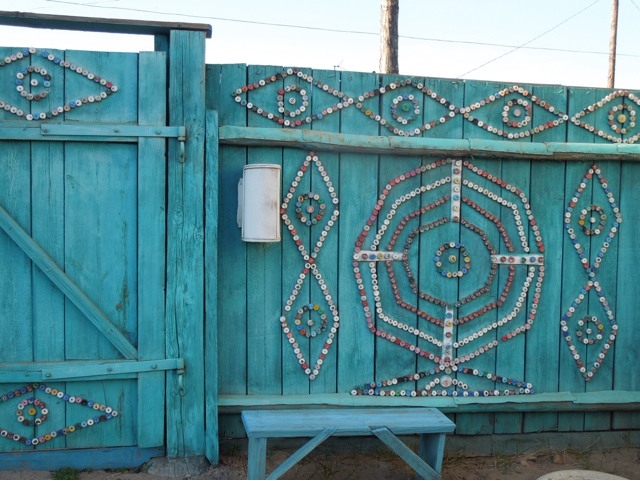Founded in 1668 as a military outpost at the confluence of the Selenga and Uda Rives, it became a trading centre on the tea caravan route from China. Its importance increased in 1949 when the Trans-Mongolian branch line to Ulaan-Baatar and Beijing was opened. It was closed city from 1934 until the 1980's due to its secret military plants (there are still mysterious blank spaces on city maps)
The indigenous people of the region, the Buryats, put up the stiffest resistance to attempts throughout history to infiltrate their culture.
Ulan-Ude's main square is entirely dominated by the world's largest Lenin head, which some maintain looks comically cross-eyed. The 7.7meter high bronze was installed in 1970 to celebrate Lenin's 100th birthday. Oddly, UU's bird population never seems to streak Lenin's bald scalp with their offerings - diehard communists say it's out of respect for the great man's achievements, but perhaps it's due to the barely visible antibird spikes.
UU's striking Stalinist-era theatre reopened after lengthy renovation in June 2011 (the first performance was for a group of foreign tourists from the Golden Eagle train). The level of craftsmanship inside is exquisite.
An ancient and vibrant part of the Russian people which still adheres to the old faith, abandoning innovations since Tsar Peter the First's period. Because of this the "Semy", as they are also called, were impriosioned and forced to move to Siberia.
The first exported "Old Believers" settled near Verkhneudinsk: in the villages - Tarbagatay,Kirition,Large Kunaley,Desyatnikova, Burnesheva. They moved and settled ther with their families. So they subsequently became known as "Semey" (family).
More than 240 years passed. The Siemeyskie still retain the golden fund of Russian culture. This is reflected in their moral principles, colorful clothing, home decoration, and the culture of their family.




 The flag signifies - Blue - Sky; white - dairy products; and yellow - Buddhism; the center is family, sun, moon,and children
The flag signifies - Blue - Sky; white - dairy products; and yellow - Buddhism; the center is family, sun, moon,and children 


 The ornate lobby and entry hall.
The ornate lobby and entry hall.







 The architecture of the villiage of the "Old Believers"
The architecture of the villiage of the "Old Believers"





 Stopping in the area to climb a small hill and gaze at the natural beauty.
Stopping in the area to climb a small hill and gaze at the natural beauty. 


Interesting fact about Lenin's head. I took a closer look at the pictures I've taken, but I didn't see any anti bird spikes. They must be really invisible.
ReplyDelete